Peanuts and cucumber plant care (Hilling up peanut plant and pinching cucumber plant)
Growing peanuts, cucumbers, and okra in open-field cultivation. (Peanut plant, cucumber plant, and etc grow guide.) This time, the main tasks include pruning cucumbers and hilling up peanuts. Additionally, we will observe the conditions of okra, eggplants, green peppers, and so on.
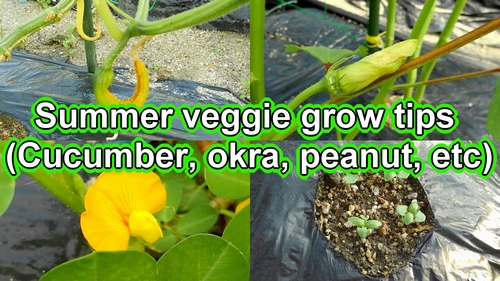
Pruning cucumbers and observing okra (Cucumber and okra plant care)
It’s been about 10 days since fertilizing the cucumbers.Strangely, many female flowers have turned yellow. Could it be due to the prolonged rainy season? Cucumbers are facing a bit challenging situation as the harvest time approaches.
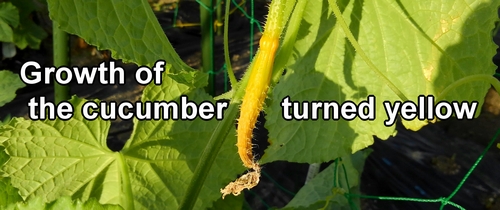
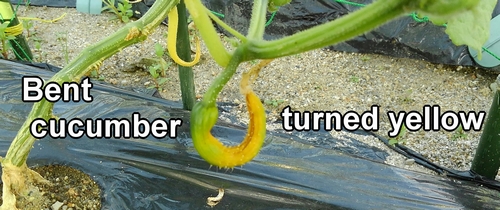
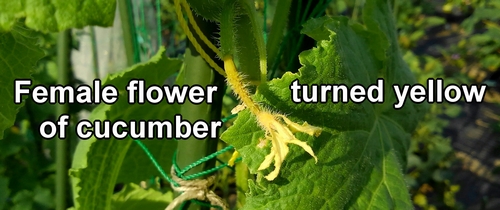
Cucumbers are delicate vegetables, so they require a bit of care in cultivation. Discolored cucumbers won’t last until harvest, so I’ll remove all of them.
Also, I’ll pick the cucumber leaves around the base and monitor the situation. (Removing cucumber leaves is to improve ventilation.)
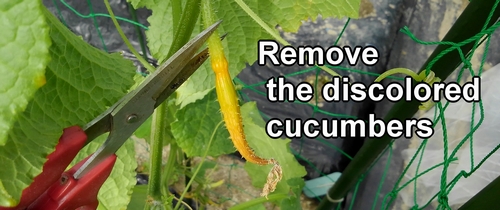
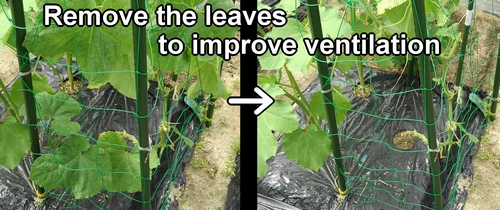
Next is cucumber pruning (pinching). The method is simple. Just cut the tip of the main stem of the cucumber plant. When you prune cucumbers, it stimulates the growth of side shoots, leading to the development of secondary shoots and thirdly shoots.
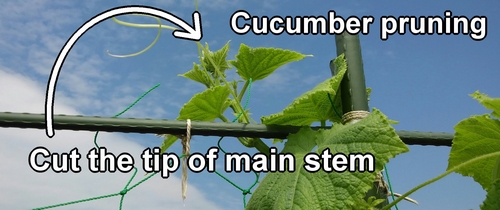
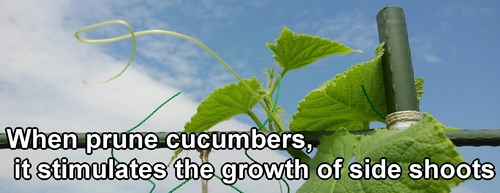
The increase in side shoots (vines) means more cucumbers to harvest when the time comes. I’m a bit concerned about the discoloration of the female flowers, but I hope they will recover and thrive after pruning.
With this, the pruning of the cucumbers (cucumber plant care) is complete.
After pruning the cucumbers, let’s take a look at the okra. The okra is starting to develop buds. Okra grows quickly, so I’ll keep an eye on it regularly to avoid missing the harvest. (Okra pods become tough and unsuitable for consumption if they grow too large. Let’s harvest them when they are young.)
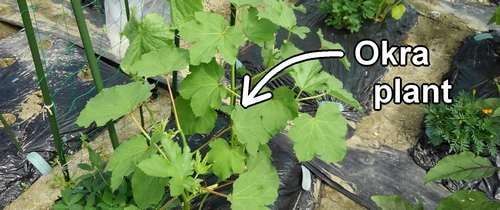
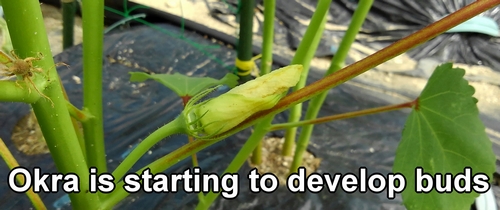
Hilling up peanuts (How to care for a peanut plant)
The peanuts are tasks for the upcoming harvest season. We’ve been using mulch for cultivating peanuts, but now that the flowers are blooming, we remove the mulch. (Peanuts produce pods underground, so mulch can be obstructive after flowering.)
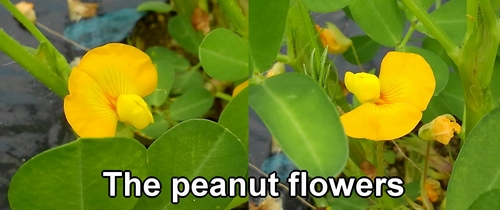
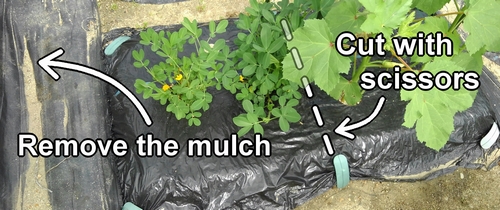
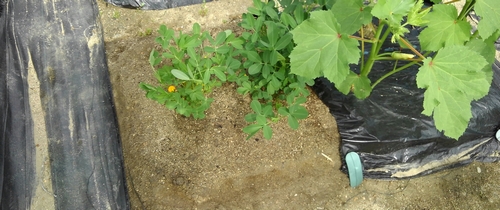
Peanuts have a unique way of fruiting. Peanuts have a part called the peg, and when the flower falls, this peg elongates and pierces into the soil. Peanut pods develop at the tip of the peg and grow larger underground in the soil.
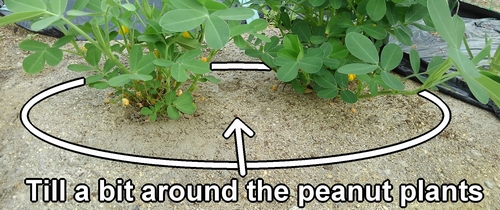
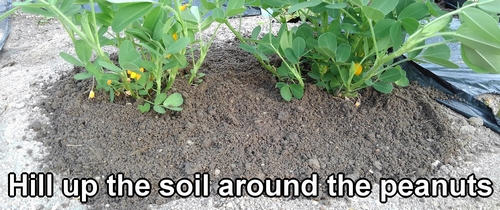
In peanut cultivation, it’s necessary to cultivate the soil around the base of the peanut plants. By tilling and keeping the soil soft, it becomes easier for the peanut pegs to pierce into the soil. Additionally, let’s perform hilling up, bringing the surrounding soil to the base of the peanut plants.
Grow eggplant, green pepper, and etc
Next are the bed of edamame and tomato. The edamame harvest is complete. The basil planted next to the tomato has sprouted.
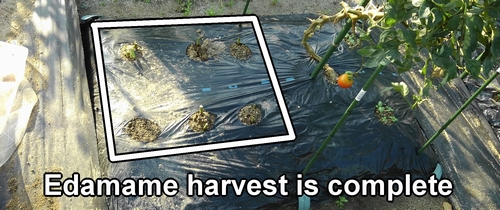
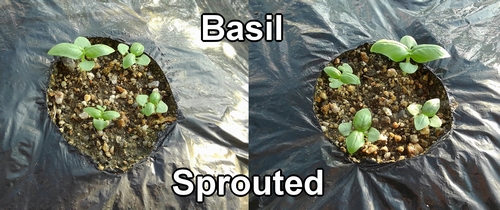
Lastly, eggplants and green peppers. I wonder if the additional fertilizer applied about 10 days ago worked for the eggplants? New side shoots are emerging near the pruned branches, and fruits have started to form.
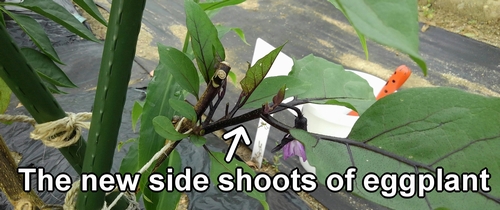
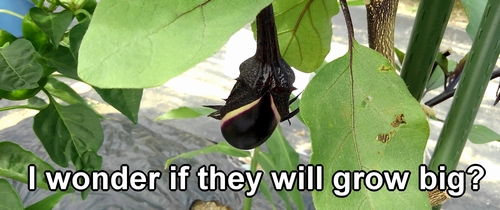
Green peppers, with only pruning and additional fertilizer, are growing well. Since green peppers produce fruits one after another, to prevent the plant from getting tired, I actively harvest the fruits. (When there are many fruits on a branch, I harvest some even if they are a bit smaller, controlling the overall number of fruits on the plant.)
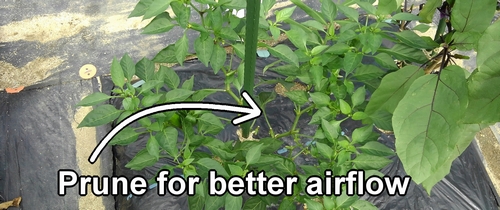
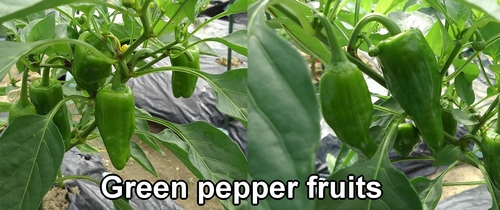
Related information on peanuts cultivation(Frequently Asked Questions for growing groundnut)
Can beginners grow peanuts?
If you follow some key points, peanuts are pretty easy to grow. The first tip for growing peanuts is to get them to sprout. Plant seeds around mid-May and try not to overwater, this helps with sprouting. Even if the seeds don’t sprout, you can replant them, and it should be fine.
When flowers bloom, remove the plastic mulch and mound soil around the base of the peanut plants. If the soil gets too dry, the peanuts inside the pods won’t grow big, so water when the soil is dry. (But too much water can rot peanuts, so you don’t need to water them often.)
Peanuts don’t need much work, so they can grow even if you leave them alone. Even beginners in home gardening can try growing them easily.
Following is the video for how-to. English subtitles are available.
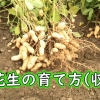

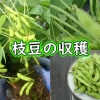

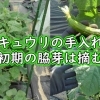

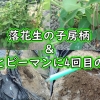




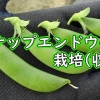
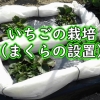
Discussion
New Comments
No comments yet. Be the first one!